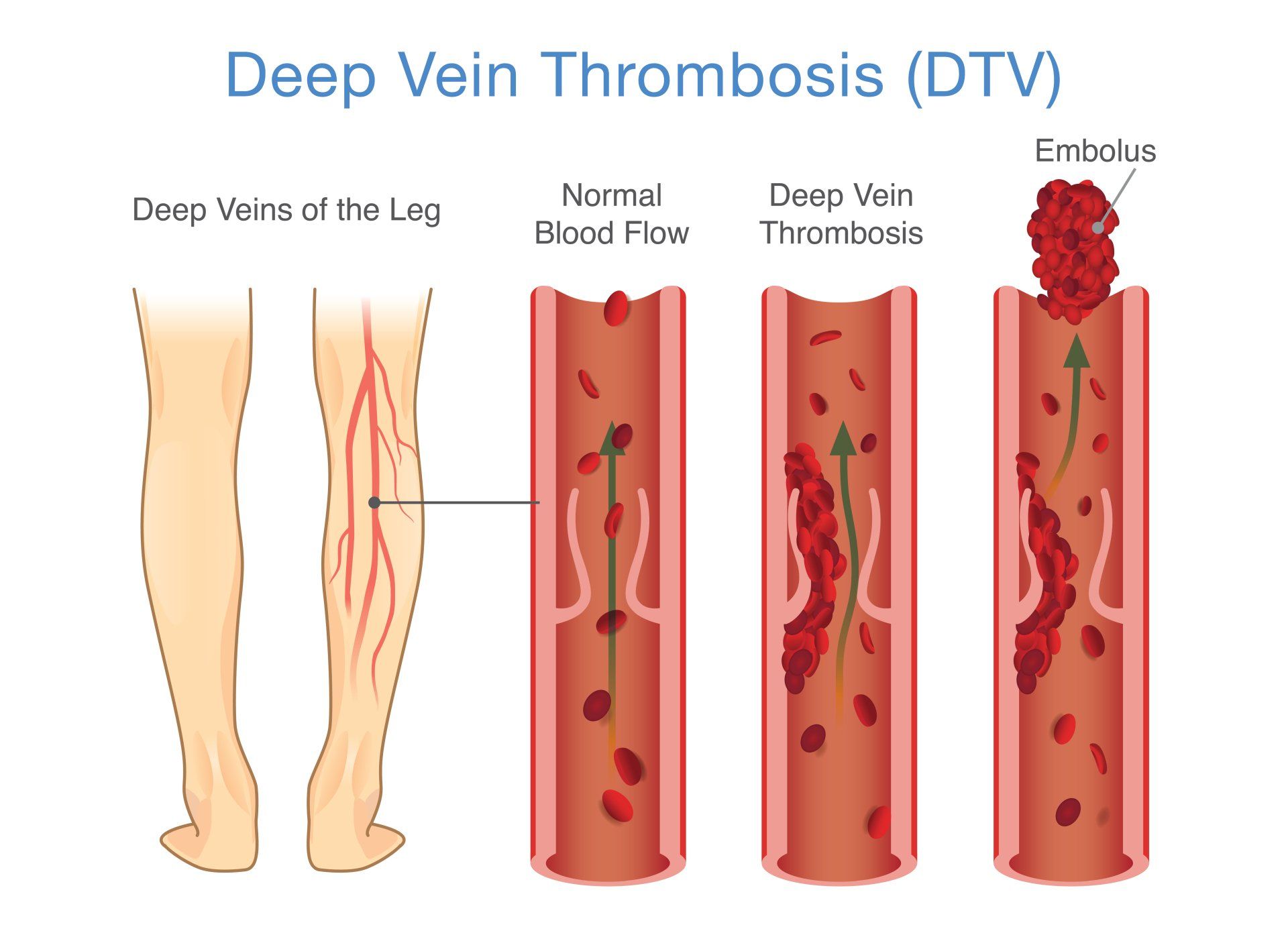Deep Vein Thrombosis

Deep Vein Thrombosis (DVT) occurs when a blood clot forms in a deep vein usually in the leg or thigh. It is essential to recognize the signs of DVT since the clot can break away and become lodged in the lungs (Pulmonary Embolism/PE).
If you suspect that you are suffering from deep vein thrombosis (DVT), it is important that you tell your doctor immediately. This can be a life threatening condition that can result from pulmonary embolism (PE).
Risk factors
- Prolonged lack of movement because of hospitalization, a long flight or drive, paralysis, or illness
- Obesity
- Cigarette smoking
- A personal or family history of DVT
- Older age
- Pregnancy and up to 6 weeks after giving birth
- Injury due to surgery, a broken bone, or other trauma
- Dehydration
- Recent surgery, especially abdominal surgery, knee or hip surgery
- Recent or ongoing treatment of cancer
- Blood disorders that make your blood thicker or more likely to clot than normal
- Medications, especially birth control pills and hormones
Symptoms
- Swelling and pain in the affected leg
- Redness and warmth along the vein where the clot is found
Diagnosis of Deep Vein Thrombosis (DVT)
Your vascular surgeon will ask questions about your symptoms and medical history as well as performing a thorough physical examination.
A venous duplex/ultrasound scan is most often used to diagnose blood clots in the legs or arms.
A Venogram or intravascular ultrasound (IVUS) may be used additionally to diagnose and plan treatment with suction thrombectomy, clot busting medicine (TPA), followed by balloons and/or stents.
Treatment
Maintain good overall health including losing weight and staying physically active will help you heal from your DVT as well as reduce future episodes of DVT.
Most often a Deep Vein Thrombosis (DVT) can be treated with blood thinners (coumadin, eliquis, xarelto, etc.). These medications help prevent the blood blood clot from extending/getting worse. It then allows our healing ability (intrinsic clot busting factors in our blood stream) over time to reduce the size and potentially dissolve the clot.
Sometimes, more invasive treatments like clot busting medicine (TPA), removing the clot (suction thrombectomy, balloons, and/or stents.


